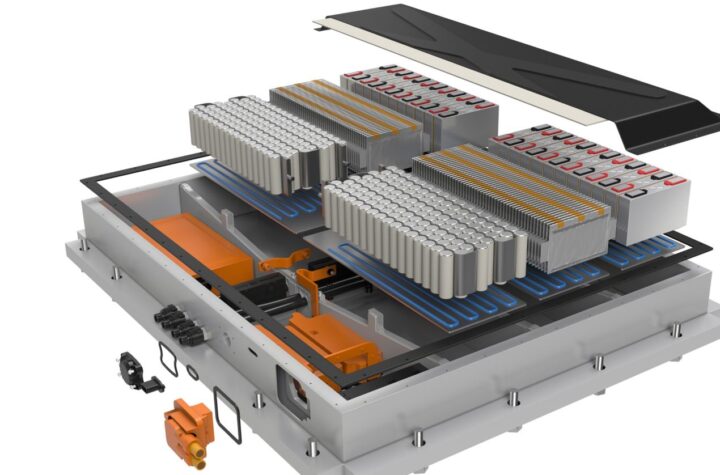
A pioneer in automotive technology, BMW unveiled its breakthrough i3 electric vehicle at the 2013 Frankfurt International Motor Show. What visitors could not see is the technology supporting the multifunctional driver interface. One of the leaders in visual computing technology is NVIDIA, which has a long association with BMW. The automakers’ newest models sport full-featured infotainment systems with 3D navigation maps, powered by NVIDIA. Danny Shapiro, Director of Automotive at NVIDIA, gives a hint of the company’s involvement in the i3 in his blog: “One of the car’s most dramatic features: a clean, uncluttered dashboard that replaces switches and knobs with a sleek digital display.
The i3’s center display renders special electric car functionality such as a dynamic range map of BMW’s Connected Drive system, turn-by-turn directions and entertainment options.” Key to NVIDIA’s automotive innovation is its Tegra® visual computing module (VCM) together with its UI Composer Studio instrument cluster and infotainment design tool. This advanced HMI design solution incorporates 2D and 3D graphics, as well as powerful interactivity capabilities to deliver multi-use graphics interfaces in the vehicle.
In addition, the company’s Jetson automotive development platform allows designers and engineers to easily create and test automotive and computer vision applications. Jetson is packaged in a 1-DIN form factor that supports several hardware configurations, so it slides easily into the dash to simplify prototyping. To be closer to the automotive industry’s roots, in August 2013, NVIDIA opened its Technology Center in Ann Arbor, Michigan. The new facility will enable the company’s growing team of Michigan-based engineers and executives to work with automotive manufacturers and suppliers in the development of next-generation infotainment, digital instrument cluster and advanced driver assistances programs.
Automotive Industries asked Shapiro about NVIDIA’s advanced automotive technology.
AI: How does NVIDIA’s platform approach to IVI with your visual computing module help close the gap between consumer demand for regular electronic device updates and the slower moving automakers’ approach to updating IVI?
Shapiro: Given the advances in smartphones and tablets, today’s consumers expect the same level of functionality and visual experience inside their cars. However a $250 smart-phone generally offers more features and more frequent updates than a $25,000 car. Automakers, with their traditional approach to development, are unable to keep pace with consumer electronic demands. Automotive development cycles are complex, long and costly. Implementing innovative solutions traditionally has required complete redesign, and a “start from scratch” approach for each new development. These approaches to development cannot keep up with consumer electronics. NVIDIA has leveraged its visual computing work in PCs, supercomputers, Smartphones, tablets, game consoles and enterprise computing when it created its Visual Computing Module (VCM), a unique modular approach to in-vehicle electronics. The solution is a compact 3×3-inch automotive-grade module featuring a Tegra® SoC (System on Chip), memory and I/O controller, enabling it to be easily integrated into a silver box produced by a Tier 1 supplier. The modular aspect of the design enables the separation of the elements that move at a rapid pace of innovation, from those that don’t.
The NVIDIA VCM is flexible and designed to power digital instrument clusters, rear-seat entertainment, infotainment systems, advanced driver assistance systems (ADAS) and head-up-displays. The modular system enables OEMs and Tier 1 suppliers to simply upgrade their designs as soon as a newer VCM version is available. This enables existing vehicle models to be easily upgraded to the latest technology, capturing the benefit of increased processing power to drive new applications. The scalable platform speeds time-to-market, offers better system performance, scalability and upgradability, while simultaneously reducing overall system design effort. NVIDIA’s Tegra SoC is a unique combination of a quad-core ARM CPU, a 5th low power ARM shadow core, a GPU, and dedicated audio, video and image processors, all packed in a tiny piece of silicon the size of your thumbnail.
On average it consumes 50 times less energy than the typical CPU, making it an extremely energy-efficient yet powerful solution for energy conscious vehicles. Multi-core Tegra mobile processors are able to handle a wide range of tasks simultaneously, enabling extreme multitasking, from ultra-smooth high resolution graphics to audio processing, gesture recognition and object detection, resulting in visually stunning in-vehicle infotainment systems and safety critical applications that truly bring the driving experience to life. NVIDIA’s VCM is in production within the newest car models from Tesla Motors, Volkswagen, Audi and BMW, with numerous other models to be introduced over the next several years.
AI: What role does your company play in furthering the scope of safety in vehicles’ advanced driver assist systems and in-vehicle-entertainment?
Shapiro: The GPU is a highly parallel processor. In order to perform computer vision in the car, numerous video cameras are utilized (front facing, side facing, rear facing) and those video feeds are then analyzed in real-time by the GPU. Computer vision algorithms can read traffic signs, detect pedestrians, track lane markings and serve as the basis for a collision avoidance system. These vision-based systems are significantly more cost-effective and flexible than many of today’s alternatives. In addition, since NVIDIA automotive platforms are fully programmable, software updates can enable new features and capabilities to be added to the car, even after it has left the dealership.
AI: How does augmented reality help promote safety in vehicles and how has your company effected the change?
Shapiro: The ability to sense the external environment surrounding a vehicle and to display appropriate information on a head up display will give drivers an important advantage. Imagine receiving alerts about traffic congestion, displays of important vehicle data, or warnings of potential hazards ahead, all without having to take your eyes off the road. These systems require tremendous processing power, so a highly parallel graphics processor is ideally suited to solve the challenge.
AI: Tell us about the role NVIDIA has played in the development of the Connected Car that links up to Cloud.
Shapiro: Several years ago, NVIDIA acquired a modem company called Icera. Today the Icera line incorporates a software-defined radio, which means it too can be upgraded to add new capabilities. 44 In essence, it is a future-proof strategy, enabling easy evolution of standards, from 2G to 3G to 4G. NVIDIA’s roadmap calls for discrete modem modules, as well as the integration of the Icera IP directly into the Tegra SoC. With onboard modem technology, the car can connect to the Cloud. In order to enable faster computing in the Cloud, NVIDIA recently announced its GRID technology.
Essentially racks of server appliances loaded with powerful GPUs, with over 2,000 parallel cores per GPU, deliver true high performance computing (HPC). GRID also enables live streaming of interactive content from the cloud. Much like Netflix streams movies and TV, GRID Gaming moves the gaming engine to the Cloud, and streams it to your mobile device or vehicle. The user controls are then sent back to the Cloud, to enable a true interactive experience.
AI: What contribution has NVIDIA made to the BMW i3 electric car?
Shapiro: Due to the restrictions placed upon us by BMW, we are unable to comment about the specific content in the i3 until its North American showcase at CES, 2014. However, NVIDIA works very closely with BMW in the design and production of its current infotainment systems where they leverage our advanced processor technology to bring smooth, high-resolution visuals to life inside the car.
AI: Tell us a little about what role NVIDIA’s Tech Center hopes to play in promoting automotive technologies in Detroit.
Shapiro: As automakers integrate more electronics into their vehicles, the requirement for hardware and software expertise also increases. Additionally, automakers are under pressure to respond more quickly to consumer demand for more connectivity, enhanced functionality and new safety features in their cars. With the establishment of the Ann Arbor Technology Center, NVIDIA is able to work more closely with Detroit-based automakers and Tier 1suppliers to quickly design and develop innovative solutions. Ann Arbor is an ideal location, close to automakers and Tier 1s, as well as emerging talent from the University of Michigan. NVIDIA, the leader in visual computing, leverages its vast experience in graphics processing and extensive global team of software engineers to provide an entire design and development ecosystem, helping automakers bring new in-vehicle experiences to the market more quickly.












More Stories
DuPont materials science advances next generation of EV batteries at The Battery Show
How a Truck Driver Can Avoid Mistakes That Lead to Truck Accidents
Car Crash Types Explained: From Rear-End to Head-On Collisions